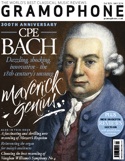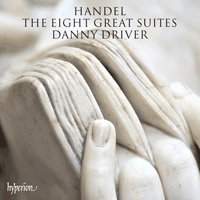Texte paru dans: / Appeared in:
*

GRAMOPHONE (05/2014)
Pour s'abonner /
Subscription information
Hyperion
CDA68041/2

Code-barres / Barcode : 0034571280417
Reviewer:
David Vickers
John Cluer published Handel’s Suites de pièces pour le clavecin in November 1720.
Hyperion’s set by harpsichordist Paul Nicholson (6/95) is one of the finest recordings of Handel’s ‘Eight Great Suites’ ever made, so it seems fair enough that now the label allows pianist Danny Driver a crack of the whip using a Steinway.
The scalic flourishes of the First Suite’s Prelude instantly reveal Driver’s
nimble fingerwork, meticulous control over dynamic accentuation on key harmonic
features and judicious use of the sustain pedal. The rippling D minor arpeggios
of the Prelude to Suite No 3 transfer to the piano thrillingly; I’m not entirely
sold on some dynamic exaggerations and smudginess in the same suite’s enormous
penultimate set of variations but the theatrical Presto finale is enunciated
crisply. Driver’s softly shaded Prelude to Suite No 6 in F sharp minor is a
clear instance where the French overture style would function entirely
differently on a harpsichord, and some listeners might miss the explosive
dramatic tension of a double-manual harpsichord’s sonorous plucked strings in
the Ouverture and Chaconne that open and close Suite No 7 in G minor; if one was
to try for that impact on a piano it would probably bury the music, so Driver’s
pragmatic solution of textural transparency is an effective alternative
treatment of the material. However, the Italianate Adagio that opens Suite No 2
in F major seems naturally suited to a legato Steinway approach. Most of
Handel’s French-style intricate dance movements are played with dignified
tenderness: the consecutive allemandes and courantes always have a delicate
balance between cantabile warmth in the elegant upper melody, softly precise
inner details and a lightly flowing bass-line. The quick Fugue that launches
Suite No 4 in E minor has a sparkling clarity that any eminent Baroque
specialist keyboardist would be pleased with. If you want to hear these pieces
played on a sleek grand piano using an engagingly post-historical approach, with
flawlessly stylish ornamentation (eg the embellished vocalising line in the
Sarabande from No 7) and a variety of dynamic nuances (the Chaconne in G major),
then look no further.
Cliquez l'un ou l'autre
bouton pour découvrir bien d'autres critiques de CD
Click either button for many other reviews


